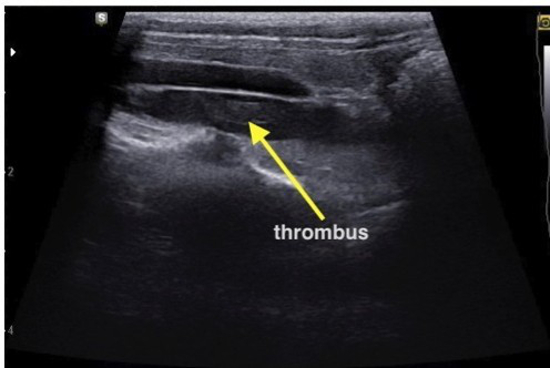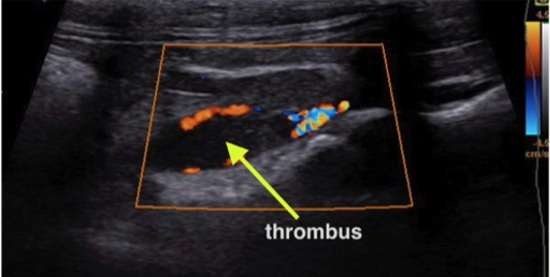Sonographic Detection of a Thrombus in the Caudal Vena Cava in a Cat - Case Report
E. Napiorkowska1; A. Kosiec-Tworus1; K. Zdeb1; 0. Szalus-Jordanow2; A. Rodo3; T. Frymus2
Introduction
A 21-week-old kitten was presented due to acute upper tract respiratory disease. In spite of supportive and antibiotic treatment the kitten failed to improve showing recurrent fever, and later lameness as well as severe subcutaneous edema of the pelvic limbs and tail.
Objectives
To determine the cause of poor clinical stage of this kitten.
Methods
Blood test, X-ray, ultrasonographic, post-mortem examination.
Results
X-ray examination did not show any abnormalities. Leukocytosis was the only finding in blood.
Ultrasonography revealed significant enlargement of medial iliac lymph nodes and a thrombus in the caudal vena cava, resulting in turbulent blood flow (Figures 1 and 2)
| Figure 1 | 
|
|
| |
| Figure 2 | 
|
|
| |
Due to disease progression the owner decided to euthanize the animal.
Necropsy revealed enlarged medial iliac, hypogastric, jejunal and colic lymph nodes. A massive thrombus was in the caudal vena cava. Histopathology revealed numerous neutrophils and bacteria in this thrombus. In the iliac lymph nodes perivascular inflammatory infiltrations, endothelial edema and thrombi were present as well as eosinophilic intranuclear viral inclusion bodies.
Conclusions
The clinical signs and inclusion bodies indicate feline herpesvirus infection, obviously complicated by a generalized bacterial infection, as bacterial conglomerates were visible in the thrombus. Bacterial emboli in blood vessels are common complication of sepsis. In this case, pressure of enlarged lymph nodes on the caudal vena cava contributed to the thrombus development resulting in congestive edema of the pelvic limbs and the tail. Thrombi are not uncommon in cats, however usually they affect arteries. This, however, is a rare case of a thrombus in a big vein.